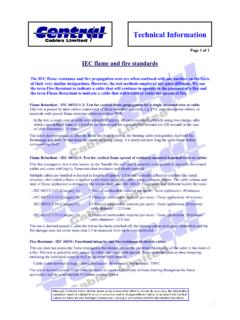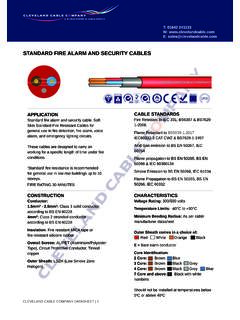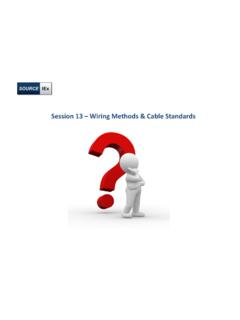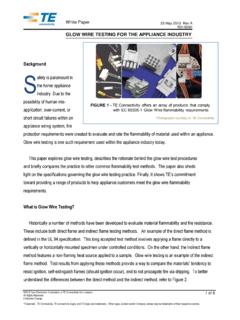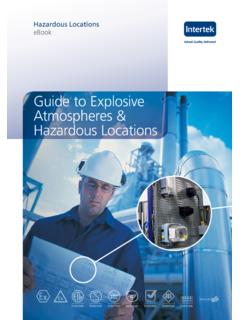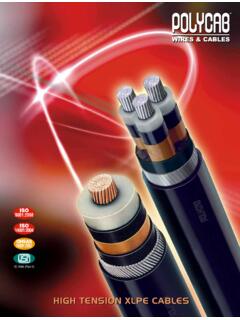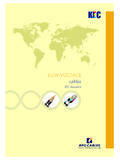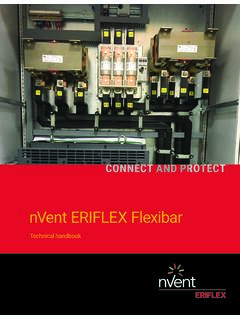Transcription of Fire Properties of Polyvinyl Chloride - Home - Vinyl
1 fire Properties of Polyvinyl Chloride Dr. Marcelo Hirschler, GBI International, Consultant of The Vinyl Institute | 2017 fire Properties of Polyvinyl Chloride | 2 Polyvinyl Chloride (PVC, or Vinyl ) possesses excellent fire performance Properties . All organic polymers (whether they are plastics or natural materials like wood, cotton or rubber) are combustible: when sufficient heat is supplied to any organic polymer, it will thermally decompose, and its thermal decomposition products will burn. However, PVC will typically not burn once the source of heat or flame is removed. This results from PVC having chlorine in its base polymer weight and it is well known that chlorine is one of the few elements that confers good fire Properties to a polymer1,2. When polymers burn they give off gaseous products, which usually generate flames (most likely with light emission and soot).
2 3-6 Polymer + Heat Thermal Decomposition Products Decomposition Products + Oxygenated Radicals Combustion Products + Heat A few polymers break down completely so that virtually no solid residue remains and all decomposition products become gaseous (and can burn). Most polymers, however, leave behind some solid residues, typically as char. Thermal decomposition of PVC occurs mostly by chain stripping, whereby hydrogen Chloride (HCl) species are given off, followed by some cross-linking. Therefore, PVC is an example of a charring material that leaves much of the original carbon content as a solid residue, meaning that less of it can burn in the gas phase. The presence of chlorine in PVC exerts its influence in two ways: causing an increase in char formation (meaning that less flammable decomposition products are formed) and generating HCl, which then acts as a gas phase scavenger slowing down further reactions of flammable products in the gas phase1, 7.
3 The actual fire Properties of PVC have been assessed based on the results of small scale and full-scale tests, and interpreted in terms of overall fire hazard, and this document summarizes some of the multiple studies conducted. Samples of unplasticized (rigid) Vinyl , such as those found in pipe, siding or vertical blinds, have better fire performance, especially in terms of having lower flame spread and lower heat released in a fire than similar samples of many other combustible materials, including wood. However, the fire Properties of PVC typically deteriorate when PVC is plasticized, which is necessary to make it into flexible products such as wire coatings, upholstery, medical blood bags or wall coverings, depending on the amount and kind of plasticizer and other additives used. However, in fact many of the plasticized PVC products in use will not continue to burn once the flame source is removed, even if not additionally fire -retarded.
4 Moreover, technologies were developed in the 1980 s and 1990 s, using combinations of plasticizers and other additives, which resulted in plasticized PVC materials with fire (and smoke) Properties better than those of unplasticized PVC8. This allowed the use of PVC materials in applications, such as plenum cables, for which PVC materials were previously not Properties of Polyvinyl Chloride | 3 fire HAZARD Overall fire safety is generally achieved by deciding if materials meet certain pre-set safety objectives. However, it is usually necessary to combine various Properties and calculate results based on certain fire models. The fire hazard of a product is determined by a combination of factors including its ignitability and flammability, the amount (and rate) of heat released from it when it burns, the rate at which this heat is released, the flame spread, the smoke production and the toxicity of the smoke.
5 It has now been determined that the rate of heat release (which determines the intensity of a fire9-12) is the key property controlling fire of the various fire Properties of PVCmaterials, and comparisons with those ofalternate materials, follow. Some examples of firehazard assessments performed on PVC materialsand products will also be discussed If a material does not ignite, it will not contribute to fire hazard and thereby cannot endanger lives. All organic materials do, however, ignite. The danger of ignition was formerly assessed based on ignition temperature (the lower the ignition temperature, the greater the hazard), using tests such as ASTM D1929 (or ISO 871). It is now accepted that ease of ignition is better assessed based on either the time to ignition at a specific incident heat flux or the critical heat flux for ignition to occur, for example using the cone calorimeter (ASTM E1354 or ISO 5660)13.
6 Table 1 indicates that PVC materials are among the least easily ignitable polymers, using either of these criteria, at various incident heat fluxes (ranging from low to high). Ignition temperature data and further information on ignition of other materials can be found in a chapter on PVC flammability2 and a further discussion of i gnition sources has also been published14. Table 2 describes the materials assessed in Table 1, many of which are also used in several other tables. EASE OF EXTINCTION The oxygen index test (also known as OI or LOI, ASTM D2863 or I SO 4589-2) is a reliable measure of the limiting concentration of oxygen in the atmosphere needed for sustained combustion. Since normal atmospheres have about 21% oxygen the higher the LOI the less likely it is that the material will continue burning in air (so that the test is occasionally considered an ignition test).
7 In fact, materials with high LOI ( above 30)will tend to burn only when a source of flameis present and extinguish otherwise. The test isnot a reliable predictor of fire hazard but isfrequently used in material data sheets toindicate fire Properties . Table 3 shows someresults and PVC materials are usually among thevery best FLAMMABILITY Once ignited, t he greater the flammability of a material, higher will be the hazard associated with it. Small-scale flammability tests extensively used for plastic materials are the family of UL 94 tests (also standardized in ASTM, ISO and IEC, but most widely known from the UL standard). In this test, a small sample of material is exposed vertically to a small Bunsen-burner type flame fire Properties of Polyvinyl Chloride | 4 from underneath and the results show a rating, ranging from V-0 (best), through V-1, V-2 to B (for Burn).
8 One aspect that this test assesses is whether the material produces, on burning, flaming particles capable of igniting a combustible product found underneath (surgical cotton is used in the test). Materials that produce flaming particles will be assessed V-2 or B, depending on whether they continue to burn. Materials with a B rating on the UL 94 Vertical test can also be tested in the less severe UL 94 HB (for horizontal burning), which measures simply a flame spread rate. The UL 94 test is the most widely used fire test for plastic materials, especially fire retarded ones, and the results are almost always found in specifications and in data sheets. PVC materials will typically not produce flaming particles unless they have been heavily plasticized and have not been fire retarded. Table 4 presents some UL 94 fire test results for wire and cable materials; it shows that PVC materials usually present a UL 94 V-0 rating down to the least thickness usually measured, typically 1 mm, while many other materials will fail (or Burn ).
9 flame SPREAD The tendency of a material to spread a flame away from the fire source is critical to understand the potential fire hazard. flame spread tests are used with the materials themselves or with the products in diverse applications (such as textiles or electrical insulation), preferably with all components of an assembly. Sample sizes range widely and range up to the large Steiner tunnel samples ( m m, or 24 ft 22 in, ASTM E84, a test widely used in building applications). Two other test apparatuses are used to assess flame spread: ASTM E162 (radiant panel) and ASTM E1321 (Lateral Ignition and flame Spread Test, or LIFT). Because of its wide use, a number of applications tests were developed from it, primarily for products to be used in plenums. They include NFPA 262 (for electrical and optical fiber cables), UL 1820 (for pneumatic tubing, UL 1887 (for sprinkler piping), UL 2024 (for communications raceways) and UL 2846 (for water distribution pipe).)
10 The fire source, two gas burners, ignites the sample from below with an 89 kW fire source. The results are presented in terms of flame spread index (FSI), calculated based on the area under the flame spread distance vs. time curve and, for smoke obscuration, smoke developed index (SDI). The alternate product tests described above use classifications based on flame spread and optical density (see Table 5). Table 6 displays FSI value ranges for a variety of products and it is clear that rigid PVC will exhibit an FSI less than 25 and that flexible PVC materials tend to range in FSI up to 40. With regard to plenum cables, multiple formulations exist using PVC jackets and even some formulations use both PVC jackets and PVC insulations; all of them meet the NFPA 262 requirements of the National Electrical Code. Note that the National Electrical Code (NEC, NFPA 70) regulates the fire performance requirements for electrical materials (especially cables) throughout the US.
